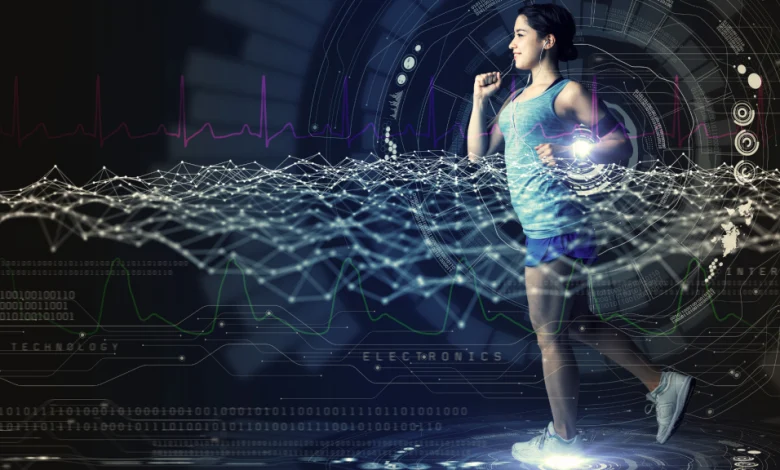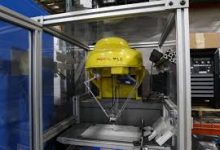
Introduction:
Sports science and technology have emerged as powerful catalysts for innovation and advancement in the realm of athletic performance, offering athletes and coaches unprecedented insights into human physiology, biomechanics, and performance optimization. From cutting-edge wearable devices to sophisticated biomechanical analysis systems, the integration of science and technology has revolutionized training methodologies, injury prevention strategies, and performance enhancement techniques across diverse sporting disciplines. In this exploration, we embark on a comprehensive journey through the nexus of sports science and technology, elucidating the principles, practices, and paradigm shifts that underpin athletic development and excellence in the modern era.
Biomechanical Analysis:
Biomechanical analysis involves the quantitative assessment of human movement patterns, kinetics, and kinematics to optimize technique, enhance efficiency, and mitigate injury risks in sports performance. Motion capture systems, comprising high-speed cameras and reflective markers, enable precise tracking and measurement of joint angles, segmental motion, and ground reaction forces during athletic activities. Biomechanical analysis facilitates the identification of movement asymmetries, inefficiencies, and performance limitations, informing targeted interventions and corrective strategies to optimize biomechanical efficiency and reduce injury risks. Furthermore, force platforms, pressure sensors, and inertial measurement units (IMUs) provide insights into ground reaction forces, impact mechanics, and dynamic balance, enhancing understanding of sport-specific movement patterns and performance demands.
Biomechanical analysis is a multidisciplinary field that applies principles of mechanics to study the structure and function of biological systems, primarily the human body. It involves the application of engineering and physics principles to understand how living organisms move, respond to external forces, and maintain stability. By examining the interactions between various components of biological systems, biomechanical analysis provides valuable insights into human movement, performance, injury prevention, rehabilitation, and ergonomics.
The human body is a complex mechanical system consisting of bones, muscles, tendons, ligaments, and joints, all working together to produce movement. Biomechanical analysis seeks to understand how these components interact to generate motion and maintain stability during various activities such as walking, running, jumping, throwing, and lifting. This understanding is crucial in fields such as sports science, physical therapy, orthopedics, and ergonomics, where optimizing performance and preventing injuries are paramount.
One of the primary objectives of biomechanical analysis is to quantify the forces, torques, and motions involved in human movement. This often involves the use of specialized equipment such as motion capture systems, force plates, electromyography (EMG) sensors, and computer simulations. Motion capture systems, for example, use cameras to track the movement of reflective markers placed on the body, allowing researchers to precisely measure joint angles, velocities, and accelerations during various activities.
Force plates, on the other hand, measure the ground reaction forces exerted by the body during activities like walking or jumping. These measurements help researchers understand how forces are distributed throughout the body and how they contribute to movement and stability. EMG sensors, meanwhile, detect electrical activity in muscles, providing valuable information about muscle activation patterns and coordination during movement.
In addition to experimental techniques, biomechanical analysis often involves mathematical modeling and simulation. Computational models can simulate the behavior of biological systems under different conditions, allowing researchers to predict how changes in parameters such as muscle strength, joint stiffness, or body mass might affect movement performance or injury risk. These models can also be used to design and optimize prosthetic devices, orthopedic implants, or sports equipment.
Biomechanical analysis has numerous applications across various fields:
Sports Science:
Biomechanical analysis is widely used in sports to enhance athletic performance and prevent injuries. By analyzing the biomechanics of techniques such as throwing, kicking, or swinging, coaches and athletes can identify inefficiencies and make adjustments to optimize performance. Biomechanical analysis also helps in designing sports equipment such as running shoes, tennis rackets, or golf clubs to maximize performance and minimize the risk of injury.
Rehabilitation:
In physical therapy and rehabilitation, biomechanical analysis plays a crucial role in assessing movement impairments, designing personalized treatment plans, and tracking progress. By analyzing the biomechanics of walking, for example, therapists can identify abnormalities in gait patterns and prescribe exercises or orthotic devices to improve mobility and reduce pain.
Orthopedics:
Biomechanical analysis is essential in diagnosing musculoskeletal disorders and designing surgical interventions. By studying the biomechanics of joint movements and loading patterns, orthopedic surgeons can better understand the mechanisms of injury and develop more effective surgical techniques and rehabilitation protocols.
Ergonomics:
Biomechanical analysis is used to optimize the design of workstations, tools, and equipment to reduce the risk of musculoskeletal injuries in various occupational settings. By studying the biomechanics of manual lifting, for example, ergonomists can recommend safer lifting techniques and design lifting aids to prevent back injuries among workers.
Biomechanics Research:
Biomechanical analysis is a thriving area of research with applications ranging from understanding the mechanisms of human locomotion to developing innovative medical devices. Researchers in biomechanics explore topics such as the biomechanics of balance and stability, the mechanics of injury, the dynamics of human-robot interaction, and the development of assistive technologies for individuals with disabilities.
Overall, biomechanical analysis is a powerful tool for understanding the complexities of human movement and enhancing performance across various domains. By combining principles of mechanics with advances in technology and computational modeling, researchers and practitioners continue to push the boundaries of our understanding of biomechanics and its applications in improving human health and performance.
Physiological Monitoring:
Physiological monitoring involves the real-time assessment of physiological parameters, such as heart rate, oxygen saturation, and metabolic markers, to optimize training intensity, monitor recovery, and enhance performance outcomes. Wearable devices, including heart rate monitors, GPS trackers, and smartwatches, enable athletes and coaches to monitor training load, track performance metrics, and optimize training protocols based on individualized physiological responses. Furthermore, advancements in wearable biosensors and physiological monitoring technologies offer insights into hydration status, thermoregulation, and fatigue levels, facilitating proactive interventions and adjustments to training regimens to optimize performance gains and minimize the risk of overtraining or injury.
Physiological monitoring, also known as biometric monitoring or biosensing, is a vital aspect of healthcare, sports science, and various other fields. It involves the continuous or periodic measurement of physiological parameters to assess an individual’s health status, performance, or response to interventions. These parameters encompass a wide range of bodily functions, including but not limited to heart rate, blood pressure, respiratory rate, body temperature, oxygen saturation, and activity level.
The primary objectives of physiological monitoring are to:
Assess Health Status:
Physiological monitoring allows healthcare professionals to track vital signs and other physiological parameters to assess a patient’s overall health and detect any abnormalities or deviations from normal values. By continuously monitoring parameters such as heart rate, blood pressure, and oxygen saturation, clinicians can identify signs of cardiovascular or respiratory distress, monitor the progress of critical illnesses, and intervene promptly when necessary.
Diagnose and Manage Medical Conditions:
Physiological monitoring is instrumental in the diagnosis and management of various medical conditions. For example, continuous glucose monitoring is essential for individuals with diabetes to monitor their blood sugar levels and adjust insulin therapy accordingly. Similarly, ambulatory electrocardiography (ECG) monitoring helps diagnose cardiac arrhythmias and assess the effectiveness of antiarrhythmic medications or interventions.
Optimize Sports Performance:
Physiological monitoring is widely used in sports science to assess athletes’ physical fitness, monitor training loads, and optimize performance. By tracking parameters such as heart rate variability, lactate threshold, and oxygen consumption, coaches and athletes can design training programs tailored to individual needs, prevent overtraining, and maximize performance during competitions.
Enhance Rehabilitation and Physical Therapy:
Physiological monitoring plays a crucial role in rehabilitation and physical therapy by providing objective data to assess patients’ progress and adjust treatment plans accordingly. For example, wearable motion sensors can track movement patterns and gait parameters in individuals undergoing rehabilitation after injury or surgery, allowing therapists to monitor recovery progress and identify areas for improvement.
Monitor Sleep and Circadian Rhythms:
Physiological monitoring is used to evaluate sleep quality and monitor circadian rhythms, which play a vital role in overall health and well-being. Devices such as polysomnography systems and wearable sleep trackers measure parameters such as brain waves, eye movements, muscle activity, and heart rate variability to assess sleep stages, detect sleep disorders such as sleep apnea or insomnia, and evaluate the effectiveness of interventions such as sleep hygiene practices or medications.
Support Remote Patient Monitoring and Telehealth:
With advances in wearable sensors and wireless communication technologies, physiological monitoring has become increasingly accessible for remote patient monitoring and telehealth applications. Patients can use wearable devices or smartphone apps to track their vital signs and share real-time data with healthcare providers, enabling remote monitoring of chronic conditions, early detection of health deterioration, and timely intervention without the need for frequent clinic visits.
Technological advancements have revolutionized physiological monitoring, making it more convenient, accurate, and cost-effective. Wearable devices, such as fitness trackers, smartwatches, and medical-grade biosensors, have become ubiquitous, allowing individuals to monitor their health and fitness in real-time. These devices can track a wide range of physiological parameters, including heart rate, activity level, sleep patterns, and even electrocardiograms (ECGs) or blood glucose levels, depending on the device’s capabilities.
Furthermore, the integration of physiological monitoring with artificial intelligence (AI) and data analytics has the potential to unlock valuable insights from large-scale biometric data sets. Machine learning algorithms can analyze patterns in physiological data to identify trends, predict health outcomes, and personalize interventions based on individual characteristics and preferences.
Despite its immense potential, physiological monitoring also presents challenges and limitations. Data privacy and security concerns, interoperability issues, and the need for validation and standardization of measurement techniques are some of the challenges that need to be addressed to realize the full potential of physiological monitoring technologies.
In conclusion,
Physiological monitoring is a vital tool for assessing health status, optimizing performance, managing medical conditions, and enhancing overall well-being. With ongoing advancements in technology and data analytics, physiological monitoring has the potential to revolutionize healthcare delivery, empower individuals to take charge of their health, and improve outcomes across diverse settings and populations.
Performance Analysis:
Performance analysis encompasses the systematic evaluation of athletic performance metrics, such as speed, power, agility, and tactical decision-making, to identify strengths, weaknesses, and areas for improvement in sports performance. Video analysis software, augmented reality (AR) systems, and computer vision algorithms enable coaches and analysts to dissect and analyze game footage, identify patterns of play, and provide targeted feedback to athletes. Furthermore, data analytics platforms and machine learning algorithms offer predictive insights into performance trends, opponent tendencies, and strategic opportunities, empowering coaches and athletes to optimize training strategies, game plans, and performance outcomes.
Virtual Reality (VR) Training:
Virtual reality (VR) training platforms immerse athletes in simulated environments, replicating game scenarios, tactical situations, and skill-specific drills to enhance decision-making, spatial awareness, and cognitive skills in sports performance. VR training enables athletes to visualize and practice complex movements, game situations, and tactical strategies in a controlled and immersive setting, accelerating skill acquisition and enhancing performance readiness. Furthermore, VR-based rehabilitation programs offer athletes personalized and interactive interventions to facilitate injury recovery, improve motor control, and enhance proprioception, ultimately expediting return-to-play timelines and reducing the risk of reinjury.
Neurofeedback and Cognitive Training:
Neurofeedback and cognitive training interventions leverage advances in neuroscience and cognitive psychology to enhance mental resilience, focus, and decision-making skills in sports performance. Neurofeedback systems measure brainwave activity and provide real-time feedback to athletes, enabling them to regulate and optimize cognitive states such as attention, arousal, and stress management. Cognitive training protocols, including reaction time drills, attentional focus exercises, and decision-making simulations, enhance cognitive processing speed, situational awareness, and executive functioning skills critical for success in fast-paced and dynamic sporting environments.
Injury Prevention and Rehabilitation:
Sports science and technology play a crucial role in injury prevention and rehabilitation, offering athletes personalized interventions and evidence-based strategies to mitigate injury risks, expedite recovery, and optimize return-to-play outcomes. Biomechanical screening protocols identify movement deficiencies, muscle imbalances, and biomechanical asymmetries predisposing athletes to injury, informing targeted corrective exercises and injury prevention programs. Additionally, advancements in diagnostic imaging, such as MRI and ultrasound, enable early detection and accurate diagnosis of musculoskeletal injuries, facilitating timely interventions and personalized treatment plans. Furthermore, rehabilitation technologies, including neuromuscular electrical stimulation (NMES), therapeutic ultrasound, and robotic-assisted therapy, offer athletes targeted interventions to enhance tissue healing, restore functional mobility, and optimize neuromuscular control following injury or surgery.
Integration and Interdisciplinary Collaboration:
The integration of sports science and technology is facilitated by interdisciplinary collaboration among coaches, sport scientists, biomechanists, physiologists, psychologists, and engineers, fostering synergies between research, practice, and innovation in athletic performance. Multidisciplinary teams leverage diverse expertise and perspectives to develop holistic and evidence-based solutions that address the multifaceted challenges of athletic development, injury prevention, and performance optimization. Furthermore, collaborative partnerships between academia, industry, and sports organizations drive innovation and translate scientific discoveries into practical applications and actionable insights that benefit athletes at all levels of competition.
Elevating Performance: Harnessing the Power of Psychological Strategies in Sports
Introduction:
In the realm of sports, where margins of victory can be razor-thin and mental fortitude often determines success, psychological strategies play a pivotal role in unlocking peak performance and achieving athletic excellence. From mental skills training to goal setting and visualization techniques, the application of psychology in sports empowers athletes to cultivate resilience, enhance focus, and thrive under pressure. In this comprehensive exploration, we delve into the multifaceted landscape of psychological strategies, elucidating the principles, practices, and paradigm shifts that underpin mental resilience and performance optimization in athletes across diverse sporting disciplines.
Understanding the Athlete’s Mind:
The athlete’s mind is a complex nexus of cognitive processes, emotional responses, and motivational drives that influence performance outcomes and competitive behaviors. Psychological factors such as self-confidence, motivation, attentional focus, and emotional regulation play pivotal roles in shaping athletic performance and determining success in sports. Athletes are continually challenged to manage pressure, cope with adversity, and maintain focus amidst distractions, underscoring the importance of psychological resilience and mental skills in achieving peak performance.
Mental Skills Training:
Mental skills training encompasses a spectrum of interventions aimed at developing psychological resilience, enhancing cognitive abilities, and optimizing performance outcomes in sports. Techniques such as goal setting, imagery, self-talk, and relaxation training empower athletes to cultivate a positive mindset, set clear objectives, and manage performance-related stressors effectively. Goal setting, both short-term and long-term, provides athletes with a framework for progress monitoring and performance evaluation, fostering motivation, commitment, and perseverance in pursuit of excellence. Visualization and imagery techniques enable athletes to mentally rehearse optimal performance scenarios, enhancing confidence, concentration, and execution under pressure. Moreover, relaxation training techniques, including deep breathing exercises, progressive muscle relaxation, and mindfulness meditation, promote physiological calmness, emotional regulation, and stress management, optimizing performance readiness and recovery.
Building Confidence and Self-Efficacy:
Confidence and self-efficacy are foundational psychological constructs that underpin athletic performance, influencing motivation, effort, and persistence in the face of challenges. Self-confidence reflects an athlete’s belief in their abilities to execute skills, overcome obstacles, and achieve desired outcomes in sports. High levels of self-confidence are associated with increased motivation, resilience, and performance consistency, while low confidence levels can undermine belief in one’s abilities and exacerbate performance anxiety. Self-efficacy, a related concept rooted in social cognitive theory, refers to an athlete’s belief in their capacity to successfully perform specific tasks or achieve desired goals in sports. Self-efficacious athletes exhibit greater perseverance, effort, and resilience in the face of setbacks, attributing failures to controllable factors and viewing challenges as opportunities for growth and mastery. Psychological interventions aimed at enhancing confidence and self-efficacy, such as performance feedback, mastery experiences, and cognitive restructuring, empower athletes to cultivate belief in their abilities, embrace challenges, and perform at their peak potential in competitive environments.
Emotional Regulation and Stress Management:
Emotional regulation and stress management are critical components of psychological resilience, enabling athletes to navigate the emotional highs and lows of competition, maintain focus, and perform under pressure. Emotions such as anxiety, frustration, and anger can interfere with cognitive processes, motor skills, and decision-making abilities, impairing performance and undermining athletic success. Effective emotional regulation strategies, such as cognitive reappraisal, acceptance, and mindfulness, empower athletes to acknowledge and manage their emotions in constructive ways, reducing the impact of negative affect on performance outcomes. Additionally, stress management techniques, including relaxation training, time management, and social support networks, mitigate the physiological and psychological effects of stress, enhancing resilience, and optimizing performance readiness in high-pressure situations.
Attentional Focus and Concentration:
Attentional focus and concentration are essential cognitive skills that enable athletes to maintain task-relevant attention, filter distractions, and sustain optimal performance levels during competition. The ability to allocate attentional resources selectively to relevant cues and stimuli is crucial for effective decision-making, anticipation, and situational awareness in sports. Narrowing attentional focus to task-relevant cues while ignoring irrelevant distractions enhances perceptual processing, reaction time, and decision-making accuracy, facilitating optimal performance outcomes. Psychological interventions such as attentional control training, attentional cueing, and mindfulness meditation empower athletes to develop focused attention, enhance concentration, and optimize performance readiness in high-pressure environments.
Developing Mental Toughness:
Mental toughness, often described as the ability to maintain focus, resilience, and determination in the face of adversity, is a hallmark of elite athletic performance. Athletes with high levels of mental toughness exhibit greater perseverance, resilience, and performance consistency across diverse competitive contexts, attributing failures to controllable factors and viewing challenges as opportunities for growth and mastery. Psychological interventions aimed at developing mental toughness, such as challenge mindset training, stress inoculation, and adversity training, empower athletes to embrace discomfort, confront adversity, and thrive under pressure. Moreover, fostering a growth mindset, characterized by a belief in the malleability of abilities and the value of effort and persistence, enhances resilience and promotes adaptive coping strategies in the face of setbacks or failures.
Team Cohesion and Leadership:
Team cohesion and leadership are critical psychosocial factors that influence group dynamics, communication patterns, and performance outcomes in team sports. Cohesive teams exhibit strong interpersonal bonds, shared goals, and mutual trust among members, facilitating effective communication, cooperation, and collective efficacy in competitive settings. Leadership, whether formal or informal, plays a pivotal role in shaping team culture, motivating teammates, and fostering a positive performance environment conducive to success. Effective leadership qualities such as vision, communication, empathy, and accountability inspire confidence, cohesion, and resilience among team members, driving collective performance gains and fostering a culture of excellence.
Individualized Psychological Support:
Individualized psychological support offers athletes personalized interventions and evidence-based strategies to address specific psychological challenges, optimize mental resilience, and enhance performance outcomes. Sport psychologists and mental performance coaches collaborate closely with athletes, coaches, and support staff to assess psychological needs, develop tailored intervention plans, and provide ongoing support and guidance throughout the training and competition cycle. Cognitive-behavioral techniques, mindfulness-based interventions, and performance enhancement protocols empower athletes to develop adaptive coping skills, regulate emotions, and optimize cognitive processes in pursuit of peak performance. Additionally, psychosocial interventions such as team-building activities, conflict resolution strategies, and communication skills training foster positive team dynamics, cohesion, and collective efficacy in team sports environments.
Conclusion:
Sports science and technology represent powerful tools for enhancing athletic performance, optimizing training methodologies, and mitigating injury risks across diverse sporting disciplines. From biomechanical analysis and physiological monitoring to virtual reality training and cognitive enhancement techniques, the integration of science and technology offers athletes unprecedented opportunities to unlock their full potential and achieve peak performance on the global stage. By embracing evidence-based practices, leveraging cutting-edge technologies, and fostering interdisciplinary collaboration, coaches, practitioners, and athletes can navigate the frontier of sports science and technology, driving innovation and advancement in the pursuit of athletic excellence. As our understanding of human physiology, biomechanics, and cognitive function continues to evolve, so too will the strategies and interventions employed to optimize athletic performance and elevate the standards of achievement in the world of sports.




